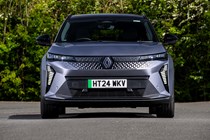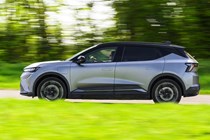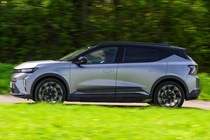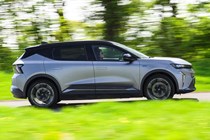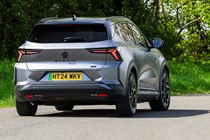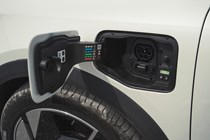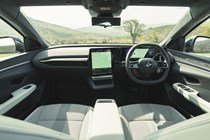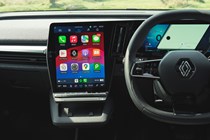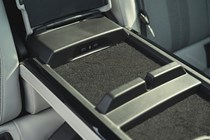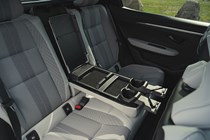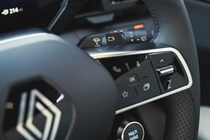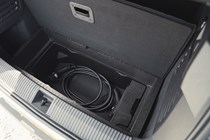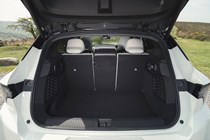
Renault Scenic E-Tech long-term test
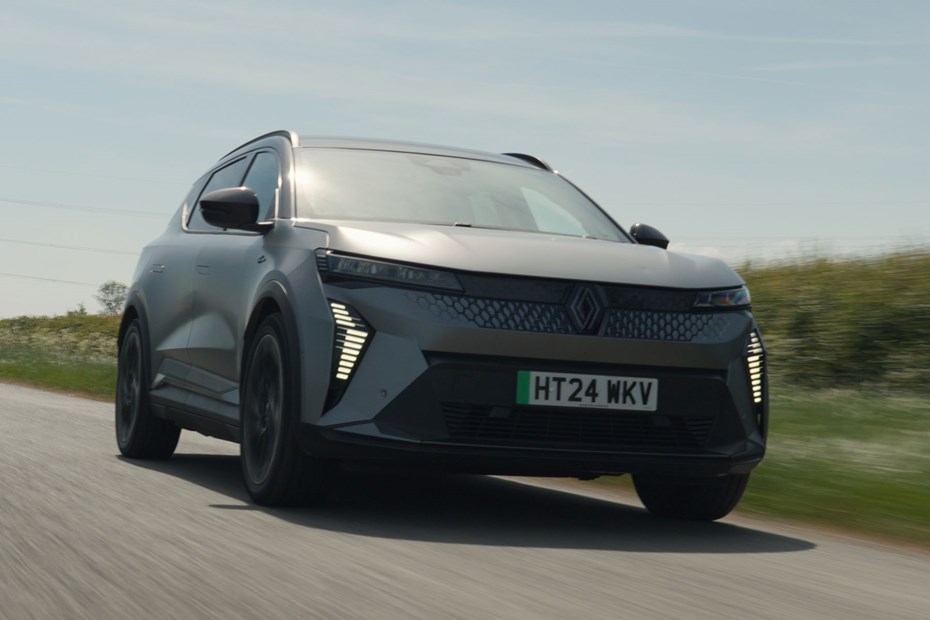
Parkers head of testing, Alan Taylor-Jones, has taken delivery of the reigning Parkers Car of the Year, the Renault Scenic E-Tech. He’s got six months to check it was the right call.

Update 1: Welcome
Introducing the Renault Scenic E-Tech Esprit Alpine 87kWh
It’s fair to say I was impressed with the Renault Scenic E-Tech when I first drove it in the UK last year. So much so in fact, that I was one of the people voting for it to become the 2025 Parkers Car of the Year title. A few days in the car won me over, but I was keen to put it to the ultimate test, a longer loan to really get a feel for it.
This Scenic is a far cry from the compact MPVs that used to bear the name. It’s no longer a lofty blob that fell out of fashion long ago, instead it’s a thoroughly desirable electric SUV with sharp lines and a conventional two-box shape. That is to say the bonnet and passenger area are two distinct shapes with no heavily raked screen to give it the people carrier kiss of death.
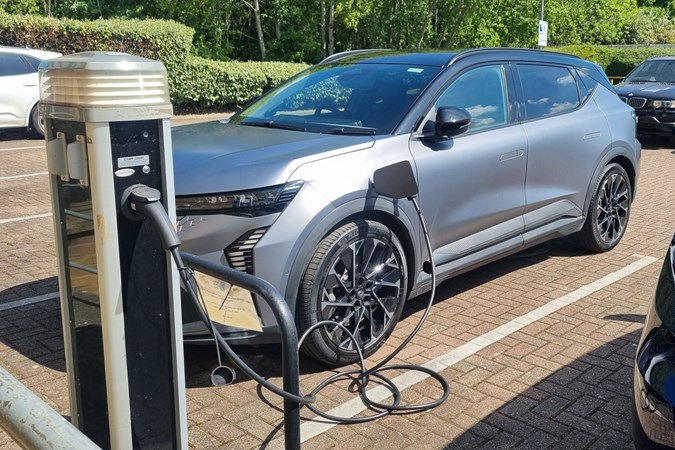
When I ordered ‘my’ Scenic, there was a choice between Techno, Esprit Alpine and Iconic trims, plus two battery sizes on offer. My inner boy racer couldn’t help but pick sporty Esprit Alpine in a fetching matte grey as it’s the closest I’ll probably get to owning an A110 sports car, although that was also the cheapest way of getting the biggest 87kWh battery.
However, Renault has since slashed the price of all variants, made the 87kWh battery your only choice, and killed off luxury-oriented Iconic. Esprit Alpine is now called Techno Esprit Alpine, with Iconic Esprit Alpine sitting at the top of the range.
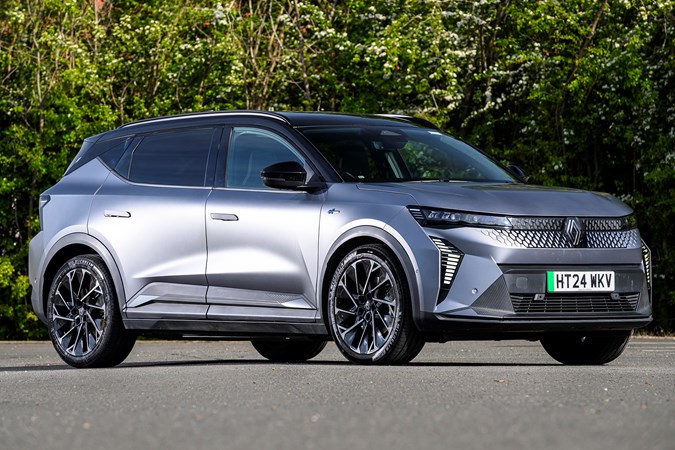
The difference? The Iconic’s funky alloy wheels and pixellated wood trim are replaced by the sporty Alpine bits, although all the extra kit from before is present and correct. Happily, that means this Techno Esprit Alpine is a fiver short of £40k even with the fancy paint, meaning it dodges the luxury car tax.
What you get with a Renault Scenic E-Tech Esprit Alpine
The exact cost of the Esprit Alpine is currently £39,995 which is usefully cheaper than the majority of family-friendly electric SUVs. A base Techno is £37,195 if you to save even more cash, although the world of finance distills this down to about £10 a month. Expect to pay well under £300 a month whichever version you pick.
Here are the 10 stand-out features that come as standard:
- 20-inch alloy wheels
- Front, rear and side parking sensors
- Two-zone climate control
- Heat pump
- Keyless entry and start
- Electric tailgate
- Ingenious rear armrest
- Heated front seats and steering wheel
- Wireless smartphone mirroring
- Adaptive cruise and blind spot assist
The only option on my Scenic is matt-grey paint with a black roof, which would have cost £1,600 at the time of delivery. This is now a no-cost option along with every other paint combination possible. Great news for new customers, less so for early adopters.
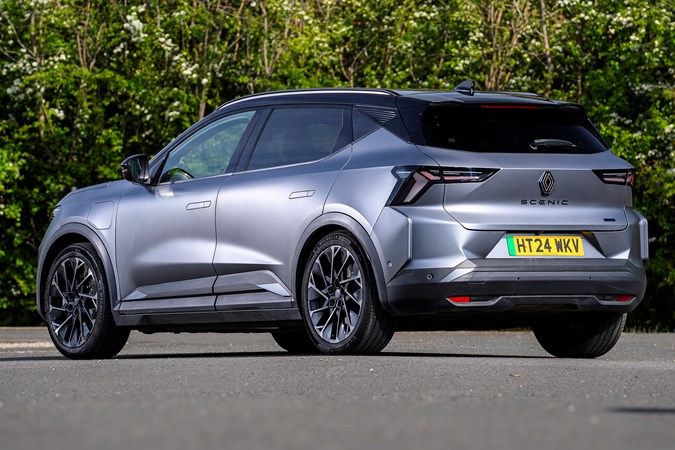
I think my chosen colour combination in conjunction with the diamond-turned black alloy wheels certainly gives a sporty, almost hot hatch vibe. This feeling is enhanced by blue carpets and trim inside, although I’ll still be setting the ambient lighting to a nice, warm orange.
This is by no means my first EV, and I’ve got the benefit of a 7.4kW home charger to keep me away from the pricey rapid charging network. With an official WLTP combined range of 373 miles, I doubt there is going to be any range anxiety unless I forget to plug it in at night.
I’m already appreciating the 220hp electric motor that gives brisk acceleration. A 0-62mph time of 7.9 seconds won’t trouble Tesla owners, yet it feels plenty for the family SUV that it is. Single carriageway overtakes are certainly not off the table, and it’s appreciably quicker than a Vauxhall Grandland Electric or Peugeot e-3008. Early signs suggest its a worthy Car of the Year winner.
Update 2: How does the Scenic drive?
Can the Scenic live up to its Esprit Alpine trim?
Good family cars should be comfortable for everyone aboard, but great family cars can also entertain the driver when nobody else is along for the ride. Is the Scenic one of those cars?
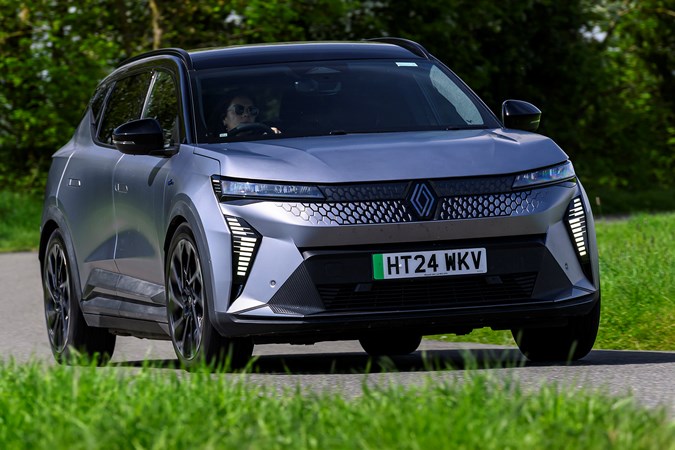
Things have got a bit silly in the family car world. It wasn’t that long ago that a ten second 0-62mph time was pretty good for a family SUV, and nearer 12 was totally normal. Electric cars have undoubtedly shaken this up, with many rivalling sports cars for accelerative force.
The Scenic is nowhere near as quick as even a base Tesla Model Y, let alone a dual motor, yet the 7.9 second 0-62mph time is quicker than most equivalent petrol or diesel SUVs. It feels plenty strong enough on the road once you’ve got used to a slow initial ramp up of power, with A road overtakes frequently an option. Sport mode helps it feel perkier, if a bit nervous in stop start traffic.
Cycling drive modes is easy thanks to a steering wheel mounted button, and there is a configurable Perso mode to mix and match different settings for the steering, throttle response and ambient lighting, for instance.
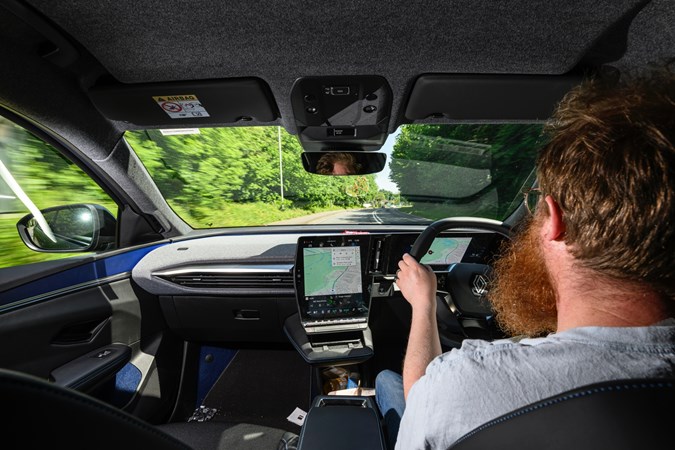
Unfortunately there’s no way to change the stiffness of the suspension. In most situations its fine, with good control over uneven Fenland roads and enough compliance to deal with nastier bumps. Particularly sharp obstacles do reveal a sudden nature to the suspension that can take you by surprise.
I can live with that for the way it goes around bends, though. I prefer Sport mode here for the additional weight it brings to the quick steering. It can feel nervous at first, but you quickly get used to it and appreciate the sense of agility it brings.
The Scenic is low for an SUV which contributes to well controlled body roll. Grip levels are high and the stability control is always present to stop anything getting too out of hand, but keep within its limits and you’ll cover ground quickly whilst having a bit of fun. This is helped by the Scenic weighing under 1900kg – a good couple of hundred kilos lighter than many rivals.

It’s almost too easy to forget how much SUV is behind you, and how long the Scenic’s wheelbase is. I’ve bumped up a couple of kerbs myself and got away with it, but my wife has managed to scuff a rear wheel, while one of the fronts is grazed, too. I can’t blame her entirely as the wheels don’t have a ridge or bulging sidewall for wheel protection leaving them quite prone. It’s worth pointing out the 20 inch wheels on the Volvo V90 we shared remained unmarked.
We’ve also both been caught out by the frustrating gear selector. For a start, we still occasionally grab the wiper stalk that’s beneath it by mistake. This is a minor annoyance I can live with. More of an issue is the gear selector itself which won’t select a gear if you just flick it up or down. Instead, it needs a moment longer held to the gear you want before it selects, meaning you’ll sometimes remain in the gear you no longer want to be in.
This has led both of us to press the throttle and find ourselves going in the opposite direction to what we intended. Pay careful attention to the gear selector read-out on the driver’s display is my advice.
Update 3: What’s the Scenic’s tech like?
How pleasant is the interior, and how easy is it to use?
Renault learned early that an all-touch-sensitive interior is a bad idea, so the Scenic gets lots of handy buttons and switches. Google-based infotainment is good, but we’re still having issues…
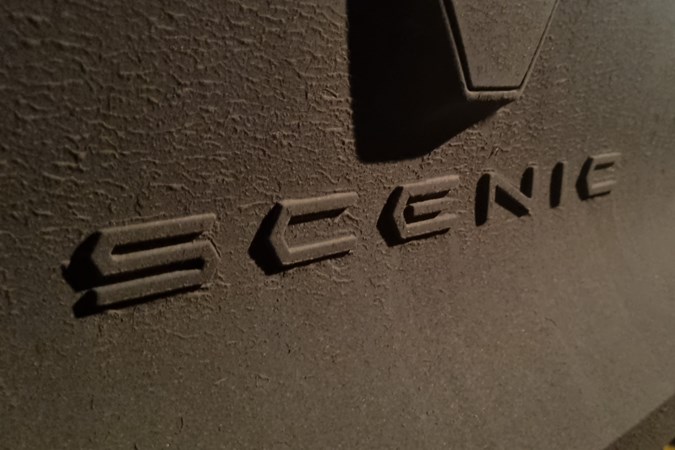
Call me old fashioned, but I’m really not a fan of touch-sensitive controls or over-reliance on touchscreens in cars. I get that manufacturers can save some money and that people dig the minimalist look, but sometimes you can’t beat a button.
It’s one of the things I really appreciate about the Scenic from a daily usability point of view. Any temperature or fan changes are done easily and you can feel your way around the volume controls on the steering column.
The heated seat and steering wheel controls are on the infotainment, but they’re always at the bottom of the screen and easily accessed. Oddly, I’ve learned you need to give the car a couple of seconds after you’ve turned the heated seat on before you can select the heated wheel, though. This perhaps irks me more than it should.
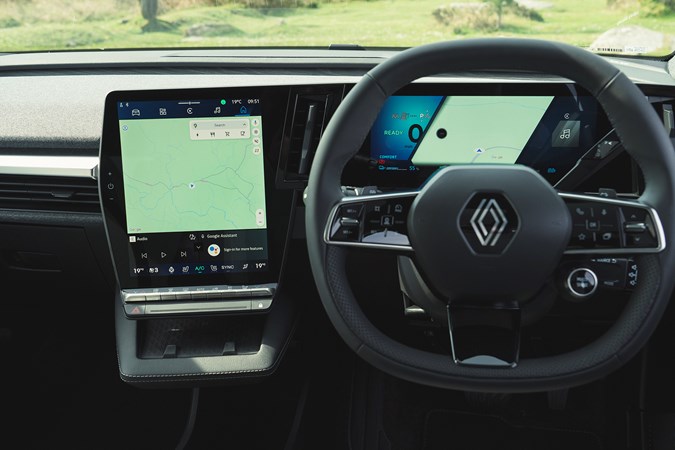
The rest of the 12.0-inch touchscreen impresses with its logical menus, sharp graphics and quick responses. Google Maps is built-in and takes into account battery life, the charging stops available and the speed at which they can charge, sometimes choosing a slightly longer route to include the fastest charger possible therefore saving time overall.
It’s really useful for the most part, but it did cause confusion when we were looking for a nearby garden centre with just enough charge to get back home afterwards. Without me realising, it routed us via the nearest rapid charger taking us back the way we came. By the time I realised, I was most of the way home with not enough juice to get me to the garden centre and back again, forcing us to swap cars and head back out.
This has only happened the once, not something that can be said for my wife’s smartphone pairing woes. Quite often her wireless Apple CarPlay connection will stutter or stop for much or all of her commute, leaving her rather frustrated. I’ve yet to encounter any issue with Android Auto, perhaps unsurprisingly given the Google-based system. There is the option of downloading certain apps from the Google Play Store which works fine, but sometimes it’s just nice to plug your phone in and be done with it.
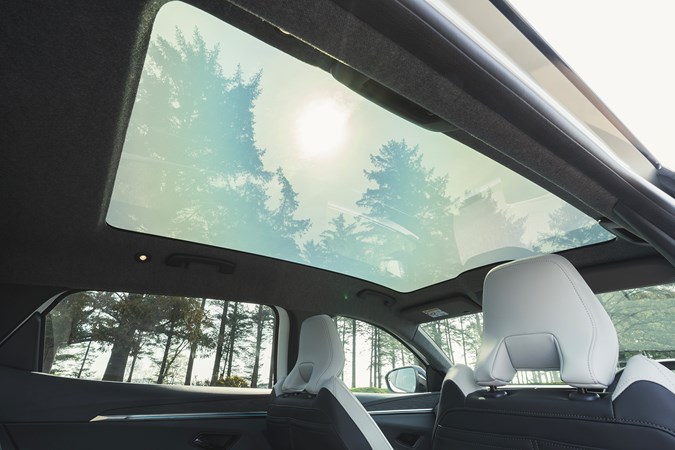
Next to the portrait-orientated infotainment system is a 12.3-inch driver’s display with a range of layouts and content to pick from including a large map. It’s easily controlled by the steering wheel that mixes toggle switches and clearly defined touch sensitive icons, and is much bigger than what you’d get in an equivalent Volkswagen.
Further niceties include configurable ambient lighting. This can either change colour with the drive mode you’ve selected with the handy steering wheel button, or you can use individual mode to pick your preferred colour, steering weight, throttle response and more.
Having experienced it in an Iconic trim Scenic last year, I am gutted my mid-spec car doesn’t come with the Solarbay panoramic roof. I’m a fan of a glass roof anyway, but this doesn’t have a separate blind. Instead, the glass itself can turn opaque to block out the sun’s rays in a variety of stages. It’s clever, improves headroom by removing the conventional blind, and fascinated my young son.
Update 4: How much space does the Scenic have?
Is there enough space inside for people, and how big is the boot?
Alan and family have been away on holiday, giving the Scenic its sternest practicality test yet.
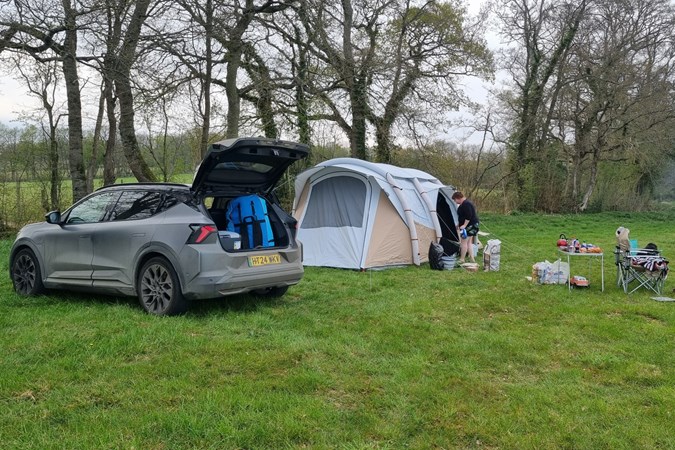
It’s astonishing how quickly you can fill a car with a toddler in tow. Rear-facing Isofix seats take up a huge amount of space for a start thanks to their width and length, often forcing a front seat passenger to sit farther forwards than they’d like. Then there’s all the other clutter you’ll need from Pampers to pushchairs before you’ve even considered bikes or any other leisure activities.
The Scenic has proved more than up to the task in day-to-day life. Having the option of sticking the Isofix on one of the rear seats or the front passenger is useful, and the passenger airbag deactivation switch is easy to locate and activate. I also love how the rear Isofix mounts are so easy to access thanks to a plastic surround around the mounting point that flips up. Oddment storage is plentiful with big door bins, a big tray beneath the centre console and a decent cubby under the front armrest.
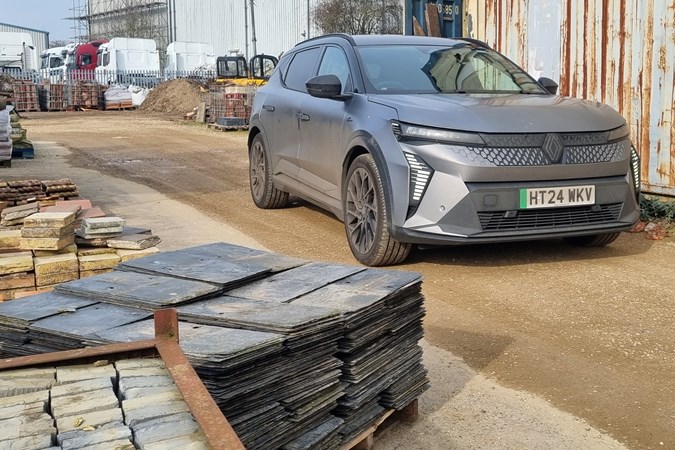
Look at the Scenic in profile and you’ll notice there’s lots of metal between the front and rear wheels and a relatively short overhang at the back. This gives you a massive clue as to where space has been prioritised inside, with passengers getting most of the car’s length. Open the rear door and you’ll spot legroom to rival cars from the class above and proper lounging space if someone short is up front.
Headroom is excellent whether you’re up front or in the back, too. It means those that like to sit high have the option of jacking up the front seats to look all the way down the bonnet, with the handy byproduct being plenty of space under the front seats for rear occupant’s feet. If you prefer a lower and more hatchback-like driving position – and I realise my wife and I are in the minority here – there’s precious little toe space under the front seats.
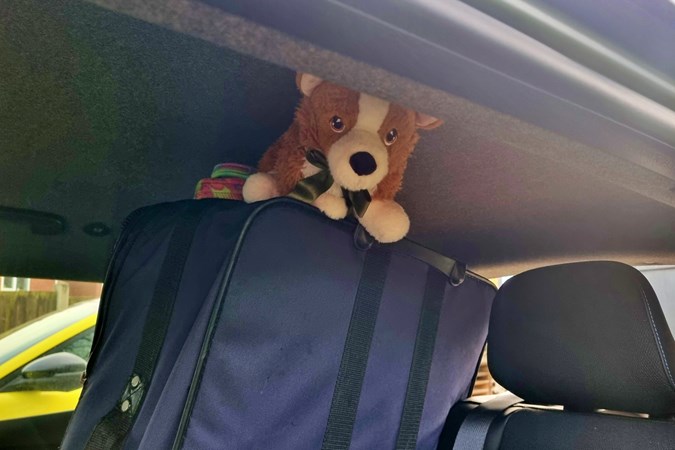
Still, the generous legroom means most people won’t be squeezing their little piggies into a tight gap, and this is a minor niggle amongst plenty of high praise. The rear floor is flat and central seat pretty comfortable, so three up in the back isn’t as unpleasant as it could be. Things are at their best four up though, as that means you can play with the Ingenious rear armrest.
Ingenious really is the right word as it’s so much more than an armrest. A pair of cupholders is nothing new, and the large shallow cubby beneath the rest is something I’ve seen before, too. The clever bit is something that’ll please any screen-addicted individual no matter their age. Rotating arms can be swung out to provide a pair of smartphone holders, or they can be lined up to suit a larger pad, and there are a pair of USB-C connectors to keep everyone powered up.
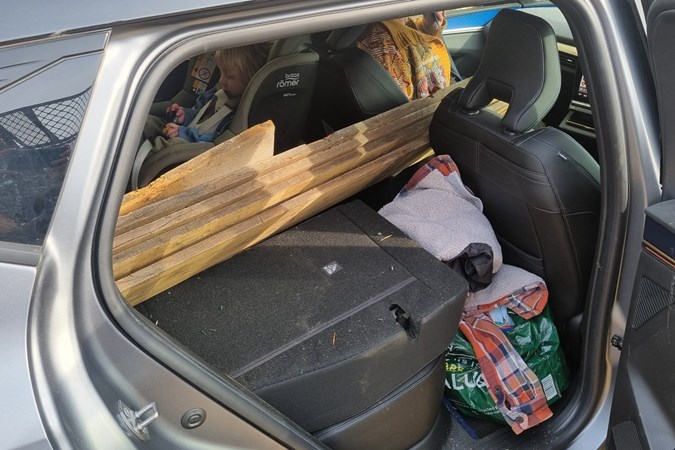
Further flexibility can be be found in the 40:20:40 split folding rear bench, although sliding and reclining isn’t part of its repertoire. Move further back and the boot’s 545-litre capacity is perhaps not quite as handy as it sounds. The load area isn’t particularly long and the width is encroached upon by some chunky plastic trims. It is very deep once you’ve got the adjustable boot floor in its lowest position – leading to a huge loading lip to hoik heavy items over.
Oh, and there’s also a sizeable well underneath everything that’ll easily swallow the charging cables and plenty more besides. The family camping holiday pictured at the top of this update proved the perfect opportunity to find out exactly how much, with our son’s Trunki failing to fill the storage area. Even so, it became clear that some reconfiguration of the boot would be needed to fit everything we needed into the Scenic.
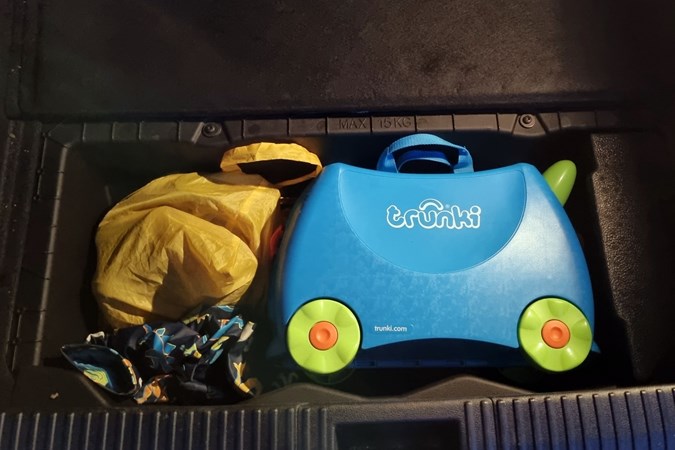
As it was just my wife, our son, dog and me, I could put the rear bench in single seat mode which certainly helped. Unfortunately, we had a six-man tent to go in, a paddleboard, two air mattresses, a table, an RC monster truck, a balance bike, and plenty more besides. A roofbox looked like my only option until I started to remove a few bits and pieces.
Out came the parcel shelf and adjustable boot floor, revealing a big bit of polystyrene that gave the now removed floor a flat surface to sit on. With everything out, our luggage just about went in with some careful Tetrising, much to my relief. I’m not sure I’d have been quite so successful in much of the Scenic’s competition.





